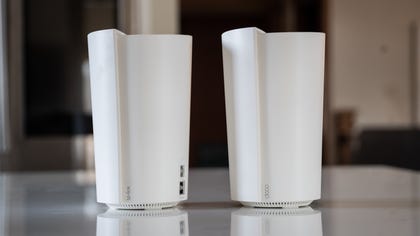If your Wi-Fi feels patchy or slow, the problem might not be your internet plan it could be where your mesh router is sitting. Mesh Wi-Fi systems are designed to spread strong, reliable internet across your home, but they only work well if you place them smartly. Based on CNET’s expert advice, here’s how to get the best performance from your mesh setup.
Put the main router in the centre
Your main mesh router, the one connected to your modem should be placed in the centre of your home. Wi-Fi signals spread out in all directions, so if you tuck the router in a corner or behind furniture, you’re wasting signal strength. A central, open location helps the signal reach every room more evenly.
Space out the nodes just right
Mesh systems use multiple nodes to pass the signal along. But if they’re too far apart, the signal weakens. Too close, and they interfere. The sweet spot? Place each node about two rooms apart. This keeps the signal strong and steady throughout your home.
Keep it out in the open
Wi-Fi doesn’t like hiding. Avoid placing your router or nodes inside cabinets, behind TVs, or under desks. Instead, put them on a shelf or table, ideally raised off the ground. This helps the signal travel freely and avoids interference from walls or metal objects.
Watch out for obstacles
Thick walls, mirrors, and even fish tanks can block Wi-Fi signals. Try to keep a clear line of sight between your mesh nodes. If your home has multiple floors or tricky layouts, consider placing nodes in stairwells or hallways to bridge the gap.
Use Ethernet if you can
If your home is wired for Ethernet, connect your mesh nodes with cables. This creates a faster, more stable connection between them, especially in large homes or areas with lots of interference. It’s a great way to boost performance without relying solely on wireless signals.
Use the app for smarter setup
Most modern mesh systems come with a mobile app that guides setup, placement, and performance tracking. These apps often include signal strength meters, helping you find the ideal location for each node. They can also alert you to weak spots or disconnected nodes, so you’re not left guessing.
How many nodes do you really need?
Not all homes are the same. A small apartment might only need the main router and one node, while a larger house could require three or more. Generally, a home between 1,000 and 1,500 square feet does well with a main router and one node. For a home between 1,500 and 2,500 square feet, two nodes may be necessary, while homes over 2,500 square feet typically benefit from three or more nodes.
Keep in mind that walls, floors, and how many people are using Wi-Fi at once can affect your coverage. Too few nodes may create weak spots, while too many, if placed too closely, can actually cause signal interference. CNET recommends starting with the manufacturer’s setup suggestions and then adjusting based on your home’s layout.
Think of your mesh system like a team of runners passing a baton. They need to be spaced just right, out in the open, and free from obstacles to keep the signal moving smoothly. With smart placement, you’ll enjoy faster speeds, fewer dead zones, and a much better online experience.




